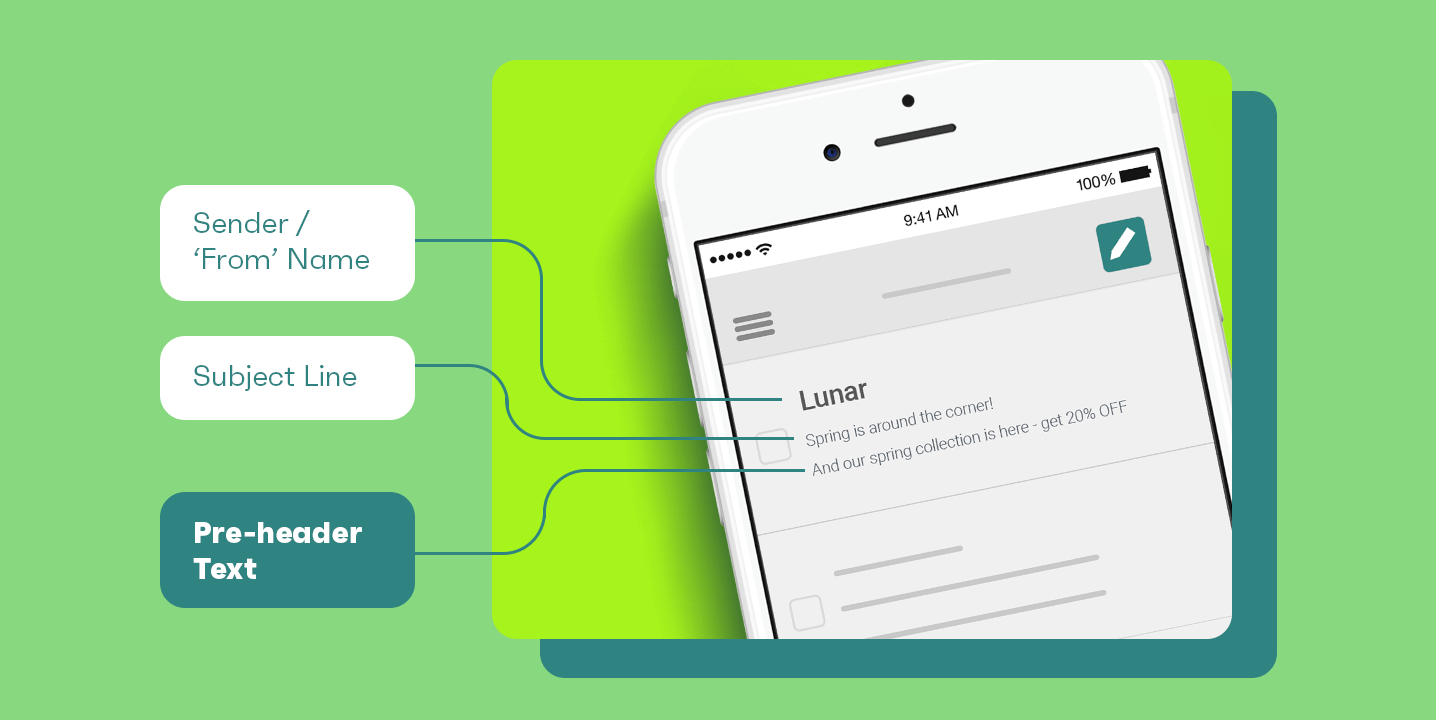How can I use A/B testing to optimize my email's use of retargeting and remarketing campaigns?
A/B testing is a powerful technique to enhance the effectiveness of your email retargeting and remarketing campaigns. By creating two versions of your email—A and B—you can test different elements such as subject lines, calls-to-action, or content layout to determine which performs better. This approach allows you to identify the most engaging elements and optimize your email campaigns for better results. Implement A/B testing by segmenting your audience, running the tests, analyzing the performance data, and applying the insights to refine your email strategy.

In the fast-paced world of digital marketing, utilizing effective strategies to engage your audience is essential. Among these strategies, retargeting and remarketing campaigns play a crucial role in enhancing customer retention and boosting conversions. One of the most powerful tools at your disposal for optimizing these campaigns is A/B testing. This method allows you to compare different versions of your emails to see which resonates better with your audience, ultimately leading to more successful retargeting efforts. In this comprehensive guide, we will explore the importance of A/B testing in email marketing, how it can optimize your retargeting and remarketing campaigns, and practical steps to implement it effectively.
Understanding A/B Testing
A/B testing, also known as split testing, is a method that involves creating two versions of a marketing asset, such as an email, and sending them to different segments of your audience. By comparing the performance of these two versions, you can identify which one achieves better results. This process is essential for understanding what resonates with your audience and what doesn’t, providing valuable insights that can inform your marketing strategies.
The Importance of Retargeting and Remarketing Campaigns
Before diving deeper into A/B testing, it is vital to understand what retargeting and remarketing entail. Retargeting refers to the practice of displaying ads to users who have previously interacted with your website or content but did not complete a desired action, such as making a purchase. Remarketing, on the other hand, is often associated with email marketing and involves sending targeted emails to users who have previously engaged with your brand.
These strategies are important because they allow you to re-engage potential customers who may have shown interest but did not convert. By reminding them of your offerings, you can increase the chances of conversion and drive sales.
How A/B Testing Enhances Retargeting and Remarketing Efforts
A/B testing can significantly enhance the effectiveness of your retargeting and remarketing campaigns in several ways:
Personalization: A/B testing allows you to experiment with different personalization strategies. By tailoring your emails to specific segments of your audience, you can determine which personalized approaches lead to higher engagement and conversion rates.
Subject Lines: The subject line of your email is the first impression your audience will have. A/B testing different subject lines can help you understand which phrases or keywords capture attention and encourage opens.
Call to Action (CTA): Your email's CTA is crucial in guiding your audience toward taking action. A/B testing various CTAs can reveal which wording or design elicits the best response, optimizing your retargeting efforts.
Email Design and Layout: The overall design and layout of your email can impact how recipients interact with your content. A/B testing different formats can help you identify which design elements resonate most with your audience.
Timing and Frequency: Understanding when to send your emails and how often can influence engagement. A/B testing different send times and frequencies can optimize your campaigns for maximum impact.
Steps to Implement A/B Testing in Email Campaigns
To effectively use A/B testing for optimizing your retargeting and remarketing campaigns, consider following these steps:
-
Define Your Objectives: Before starting an A/B test, clearly define what you want to achieve. Are you looking to increase open rates, click-through rates, or conversions? Having specific goals will guide your testing process.
-
Choose Your Variables: Identify the specific elements you want to test. This could be the subject line, email design, CTA, or send time. It is essential to test one variable at a time to accurately assess its impact.
-
Segment Your Audience: Divide your email list into two groups that are similar in characteristics. This ensures that the results of your A/B test are valid and not skewed by differences in audience behavior.
-
Create Your Variations: Develop two versions of your email, incorporating the changes you want to test. Ensure that both versions are distinct yet maintain the overall message and branding of your campaign.
-
Send Your Emails: Launch your A/B test by sending the two variations to the segmented groups simultaneously. Timing is crucial, as sending them at the same time minimizes external factors that could affect results.
-
Analyze the Results: After the test period, analyze the performance of both versions. Look for key metrics such as open rates, click-through rates, and conversions. This analysis will help you determine which version was more effective.
-
Implement the Winning Version: Once you have identified the more successful variation, implement it in your ongoing retargeting and remarketing campaigns. Use the insights gained to inform future tests and optimize your overall strategy.
Best Practices for A/B Testing in Email Marketing
To maximize the effectiveness of your A/B testing efforts, consider the following best practices:
-
Keep It Simple: Focus on one variable at a time. Testing multiple changes simultaneously can complicate results and make it difficult to identify what worked.
-
Test with a Sufficient Sample Size: Ensure that your audience segments are large enough to produce statistically significant results. A small sample size can lead to inconclusive findings.
-
Monitor External Factors: Be aware of any external factors that might influence your test results, such as holidays or promotions. Choose a testing period that minimizes such influences.
-
Use Reliable Analytics Tools: Leverage reliable analytics tools to track and analyze your results. This will provide you with detailed insights into how each variation performed.
-
Document Your Findings: Keep a record of your A/B tests, including the variations tested and their results. This documentation will serve as a valuable reference for future campaigns.
Challenges of A/B Testing
While A/B testing offers numerous benefits, there are also challenges to consider:
-
Time-Consuming: A/B testing can be time-consuming, especially if you conduct multiple tests. However, the insights gained can lead to long-term improvements.
-
Requires Patience: Results from A/B tests may not be immediate. It is essential to be patient and allow sufficient time for analysis to make informed decisions.
-
Risk of Over-Testing: Constantly changing variables without a clear strategy can lead to confusion and diluted branding. It is important to maintain a balance between testing and consistency.
A/B Testing Success Stories
To illustrate the effectiveness of A/B testing in email marketing, consider the following hypothetical scenarios:
-
E-Commerce Brand: An e-commerce brand used A/B testing to refine its retargeting emails. By experimenting with different subject lines, the brand discovered that a more personalized approach, including the recipient’s name, significantly increased open rates. The result was a marked improvement in overall conversions from their retargeting efforts.
-
Travel Company: A travel company employed A/B testing to evaluate the effectiveness of different CTAs in their remarketing emails. After testing phrases like “Book Now” versus “Explore Your Options,” they found that “Explore Your Options” led to a higher click-through rate. This insight allowed them to tailor their future campaigns for better engagement.
Future Trends in A/B Testing for Email Marketing
As the digital marketing landscape evolves, so too will A/B testing methodologies. Some future trends to consider include:
-
Increased Automation: Automation tools are becoming more sophisticated, allowing marketers to automate A/B testing processes and analyze results in real time.
-
Integration with Machine Learning: Machine learning algorithms can help predict outcomes based on previous A/B tests, making it easier to determine the most effective strategies for specific audience segments.
-
Emphasis on Mobile Optimization: With the rise of mobile usage, A/B testing will increasingly focus on optimizing email designs for mobile devices, ensuring a seamless user experience across all platforms.
A/B testing is an invaluable tool for optimizing your email’s use of retargeting and remarketing campaigns. By understanding how to implement this strategy effectively, you can significantly enhance your email marketing efforts, leading to increased engagement and conversions. Remember to define your objectives, choose your variables wisely, and analyze the results thoroughly. As you refine your approach through continuous testing and learning, you will build a more robust and successful email marketing strategy.
FAQs
What is A/B testing in email marketing?
A/B testing in email marketing involves creating two versions of an email to compare their performance, helping marketers determine which version resonates better with their audience.
Why is A/B testing important for retargeting and remarketing campaigns?
A/B testing is important because it allows marketers to optimize various elements of their emails, such as subject lines and CTAs, enhancing the effectiveness of retargeting and remarketing efforts.
How often should I conduct A/B tests?
The frequency of A/B testing depends on your campaign goals and audience size. Regular testing is beneficial, but it is essential to balance testing with maintaining a consistent brand message.
Can I A/B test multiple elements in one email?
It is recommended to test one element at a time to accurately measure its impact. Testing multiple elements simultaneously can complicate the analysis of results.
What metrics should I track during A/B testing?
Key metrics to track during A/B testing include open rates, click-through rates, conversion rates, and overall engagement. These metrics will help you evaluate the effectiveness of each email variation.
Get in Touch
Website – https://www.webinfomatrix.com
Mobile - +91 9212306116
Whatsapp – https://call.whatsapp.com/voice/9rqVJyqSNMhpdFkKPZGYKj
Skype – shalabh.mishra
Telegram – shalabhmishra
Email - info@webinfomatrix.com
What's Your Reaction?




















